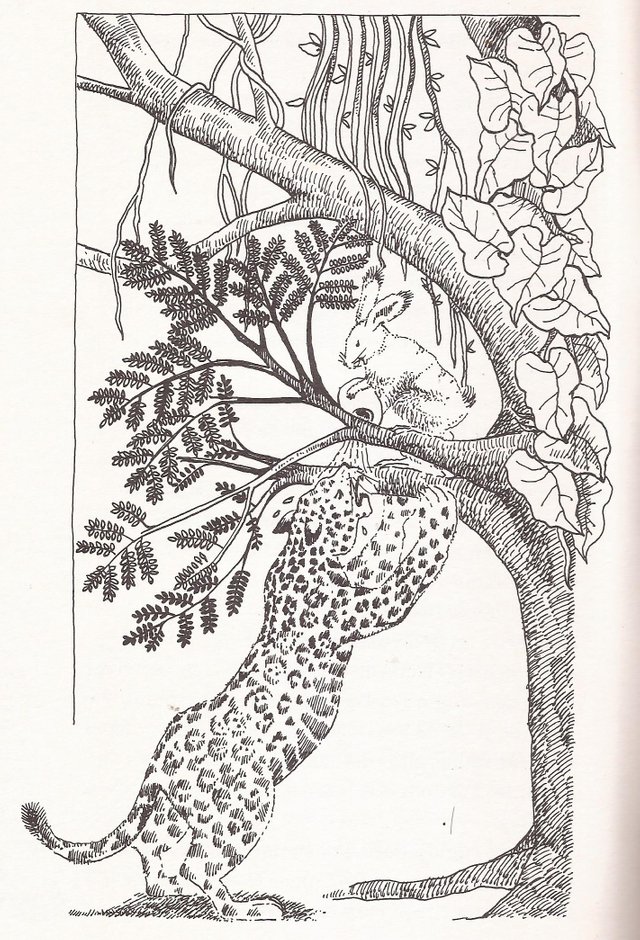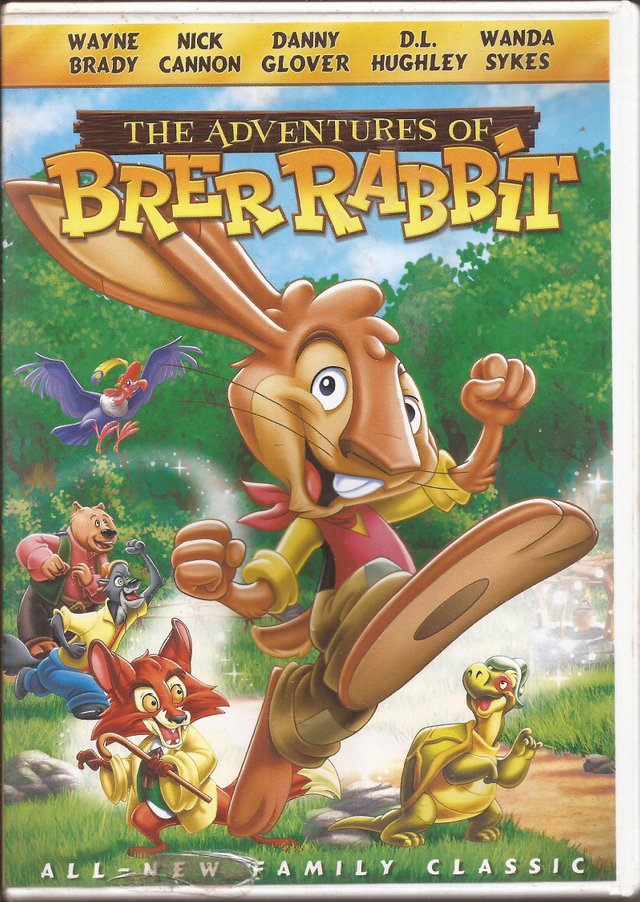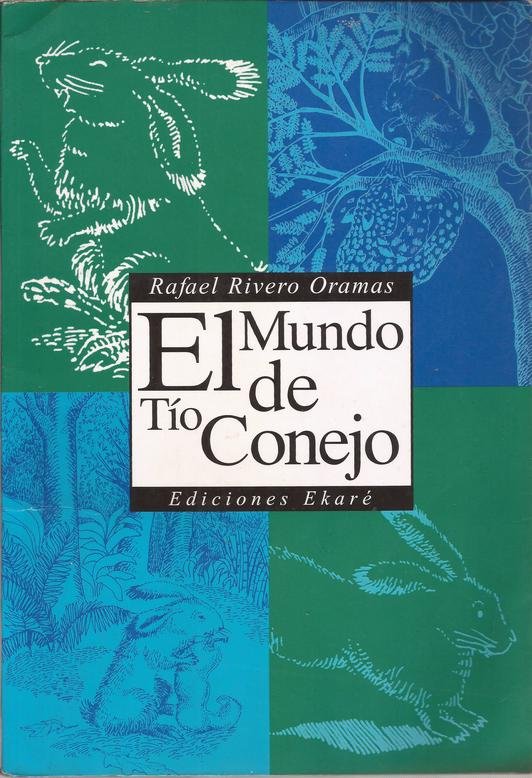Tio Conejo: African Roots and Venezuelan Renditions
(Part I)
Greetings, dear Steemians.
With this post I want to introduce a series of posts on Venezuelan folklore and literature in the context of the african diaspora. Some of the subsequent sections of this series will be published via the @EquipoCardumen magazines, such as #Astrolabio and, if sponsors agree, via other magazines.

Illustration by Alicia Ulloa of one of the stories in Rafael Rivero Oramas's collection
Although most folklorists are self-critical of the role played by Folkloristics in perpetuating some of the erroneous images of the discipline and/or in many instances its inability to move beyond the mere collecting of artifacts (lack of application of “grand theories”), the blame for the academic discredit tends to be put on non-folklorists’ practices and marketing decisions at the moment of making folklore available to the masses. Alan Dundes summarizes it poignantly and it is worth quoting in full,
Related to the fact that we seem to be besieged by popularizer nonfolklorists masquerading as folklore scholars, if one walks into any of the large commercial bookstores such as Barnes and Noble or Borders and checks the ‘folklore and mythology’ sections, what does one find? There are the inevitable numerous anthologies of Greek myths or dictionaries of mythology containing mostly entries devoted to Greek and Roman mythology, volumes of folktales from all over the world retold by editors—the word ‘retold’ should be anathema to professional folklorists—typically bowdlerized and dumbed-down for children… (Dundes 392).
Dundes’s description is certainly symptomatic of the tensions between folklore studies and other disciplines (children’s literature among them) that, in a way, appropriate folklore material and turn it into homogenized commercial items. The pressure of “the market” has generated divisions even among folklorists, some of whom call for a more marketable discipline. The consequences of these divisions are obviously influencing every aspect of the field, from terminology to methodologies to the way folk material is published or commercialized.
Paraphrasing Maxine Hong Kingston, “I love it whenever I find [something] like the African-American [rabbit, the Cuban rabbit, the Mexican rabbit, the Venezuelan rabbit]—when I find out that they are all [rabbits] and they are all in [the American continent], then I feel connected to the African American people and again inspired that we are all one human race. I think it’s so important for us to find figures like that, so that we can make our human connections.”

Trickster and Trickster Discourse in World Folklore. An Overview.
Although nobody can claim authorship for the universally anonymous folk tales (take Venezuelan Tío Conejo, for instance), in countries like Venezuela, only through the work of some authors—we might as well call them compilers, raconteurs, or re-tellers—have these stories been preserved, known, and transmitted to subsequent generations. This particular situation becomes a problem when trying to identify the origin of the stories. A brief reference to the African tricksters and their relationship with the Venezuelan rabbit tales is necessary to understand the motives of modern authors for using Tío Conejo for cultural and political purposes.

This is the case of Rafael Rivero Oramas and Antonio Arraiz. The stories Rivero collected and published in the 1930s correspond to the folkloric tradition of animal trickster tales. Most of the stories from his collection have Tío Conejo as the main character. Rivero’s tales are closer in style to those edited by American writer, Joel Chandler Harris, during the 1880s, later popularized by Julius Lester and dozens of other writers in picture book form and even movie adaptations. In the Venezuelan stories, Tío Conejo is also a cunning, incorrigible, and cynical rascal who tricks everyone, sometimes for no reason.

Arraiz’s Tío Conejo, on the other hand, represents a search into the ancestral ambiguous functions of the trickster character, not only as a chaotic agent, but also as a mediator and promoter of unity
. By focusing on Arraiz’s stories, it can be argued that not only do tricksters develop in a particular fashion according to the cultural context they are transmitted, independently of their ancestral origin, but also that Arraiz’s use of Tío Conejo goes beyond the rescuing of a cultural asset. Unlike Rivero, Arraiz did not try to simply reflect a culture; he also tried to subvert it by questioning the heroic images Venezuelans have typically fostered.
Thanks for your visit. Do not miss the second part of this post.

All images from personal files (scanned copies of my books and movies)
Works cited or consulted
Arraiz, Antonio. Tío Tigre y Tío Conejo. Caracas: Monte Ávila Editores, 1980.
Dundes, Alan. “Folkloristics in the Twenty-First Century” (AFS Invited Presidential Plenary Address, 2004). JAF 118 (2005): 385-408.
Flores de Tovar, Olga, Cristina Flores, and Gladis Requena. Castellano y Literatura I. Caracas: TEDUCA, 1986.
Guardia Bonett, Elida. Tío Conejo (AudioCassette). Colleyville: Zaratí Press, 1999.
Harris, Joel Chandler. Uncle Remus. His Songs and His Sayings. New York: Appleton’s 1910.
Kingston, Hong Maxine. In Conversations with Maxine Hong Kingston. Eds. Paul Skenazy and Tera Martin. Jackson: U. P. of Mississippi, 1998.
Lester, Julius. The Tales of Uncle Remus. The Adventures of Brer Rabbit. New York: Puffin Books, 1987.
Pollak-Eltz, Angelina. Vestigios Africanos de la Cultura del Pueblo Venezolano.
Caracas: Universidad Católica Andrés Bello, 1972.
Rivero Oramas, Rafael. El Mundo de Tio Conejo. Caracas: Ekaré, 1999.
Roberts, John. From Trickster to Badman: The Black Folk Hero in Slavery and Freedom. Philadelphia: University of Pennsylvania Press, 1989.
Uslar Pietri, Arturo. La Invencion de America Mestiza. Mexico: FCE, 1996.






